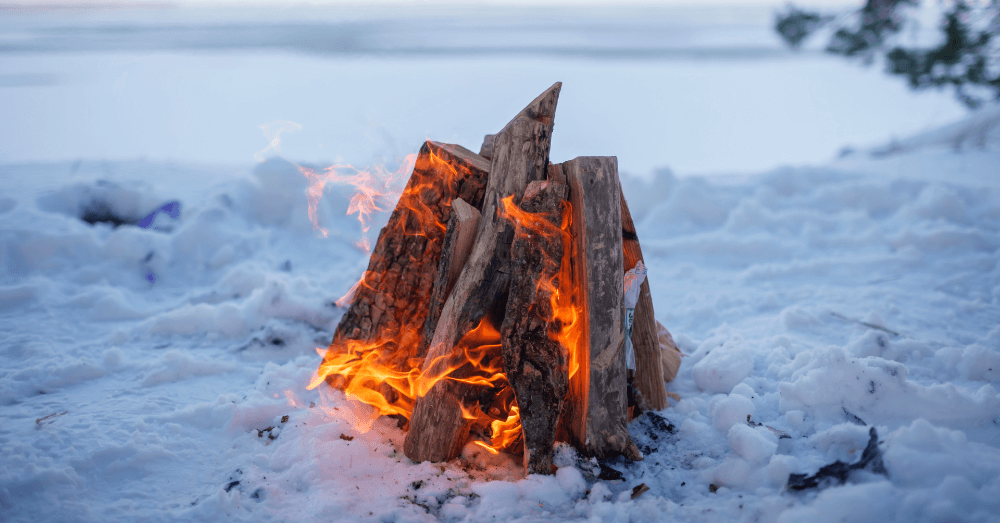Whether you’re camping in the wilderness or enjoying time in your backyard, a cozy winter campfire can be the perfect addition to your outdoor experience.
How do you build a great campfire? This is a skill that’s taught to children during scouting, but if you never had that experience, building a fire might be new to you. Thankfully, its pretty easy and only take a few steps, as long as you follow a few of the simple rules of campfires and start the right way.
Here are all of the steps you need to have a cozy winter campfire going to keep you warm during a cold time of the year.
1. Create a Fire Ring
Before you can have a campfire, you’ve got to create a place that will keep it contained and won’t burn the entire forest or your backyard. This means creating a designated area with some rocks, stones, or a metal ring. Some people buy firepits, and some campgrounds have designated fire rings at each campsite that can be used. If you’re wilderness camping, you’ll want to clear an area and surround it with some large rocks to contain your fire.
In an area without rocks or stones, you can dig a pit and put the fire in the ground to ensure the fire is contained by the soil, but this should only be used when you don’t have access to rocks or other means of containing the fire.
2. Gather The Wood
To successfully build a cozy winter campfire, you’ll need to gather a few different types of wood for the fire. These are Tinder, Kindling, and Firewood. The tinder includes small twigs, dry leaves, and pine needles. And other small flammable materials that can begin to get the area hot enough to burn the kindling. The next material required is kindling, which is made of small sticks that can begin to make the fire large enough to get more heat going in the designated area. Once the kindling is going well, firewood can be added. You want firewood of various sizes, especially if you want the fire to keep going all night long.
Typically, you should gather wood from the local area. Most campgrounds require that you use only local wood because they don’t want invasive insect species introduced into the area.
3. Find Your Fire Shape
There are various shapes that can be used to make the fire work well for you, and those shapes have different benefits. The cone shape has logs standing on the end that touch each other at the top. This allows for the best airflow and can be a great shape to get the fire going strong.
A log cabin shape is used by stacking logs on each other and changing directions with each layer. This shape could burn a long time, but you have to be careful to leave room for airflow and put some kindling and tinder across each layer, including the top, to ensure the fire burns hot.
The pyramid, which is actually an upside down pyramid, uses three or four large logs at the bottom and then the other layers are smaller logs. The smallest layer is on top The idea is to allow the fire to burn down to the large logs, which will burn the longest.
4. Light It Up
The goal is to have a cozy winter campfire, and you won’t have that unless you light it up and let it burn. Start by lighting the tinder, which will hopefully begin to burn the kindling and then the firewood. You can blow lightly at the base of the fire to give it oxygen, which will help increase the intensity of the flame and bring the fire to the heat that you’re looking for.
5. After the Fire
When you’re done with your fire, you need to ensure it’s fully extinguished and won’t catch anything on fire around the area. This can usually be done by pouring water over the fire or burying it in sand or dirt. Once you’ve got your cozy winter campfire extinguished, you’ll need to clean up the area and make it look like you were never there. This is part of the Leave No Trace principles of camping and hiking in the wilderness.
Enjoy your cozy winter campfire with some stories, drinks, and s’mores that can make your campfire time a wonderful experience for everyone. Whether you use the fire for heat, cooking, entertainment, or relaxation, it can be a great thing to enjoy a fire, especially in the winter, when the heat easily offsets the cold.

